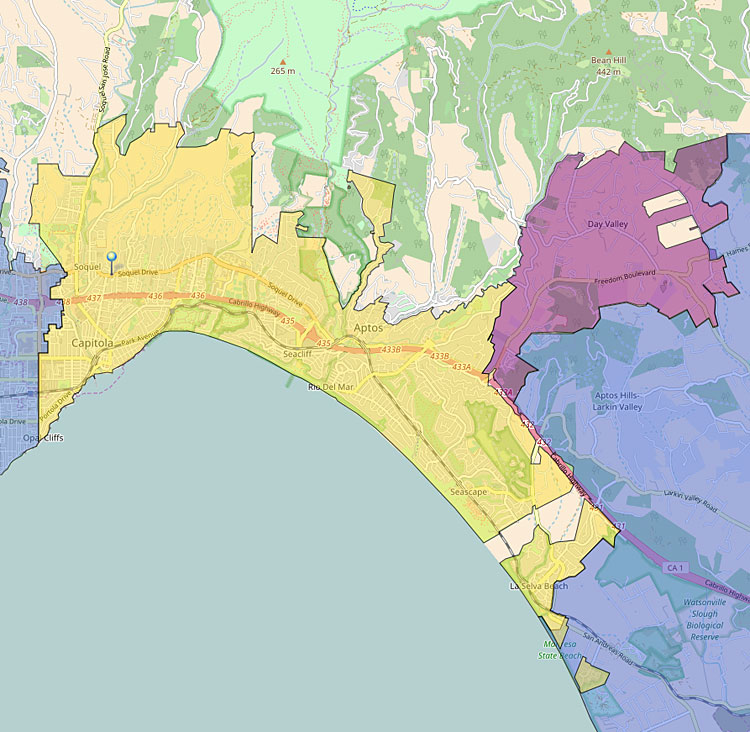By Dr. Bruce Daniels, SCWD Board President

As you probably already know, our groundwater supply is threatened by intrusion of seawater. In fact, we have already suffered seawater intrusion and contamination. In the eastern side of our District in the Seascape and La Selva areas, seawater has already been detected inland. Just to the west of our District at Pleasure Point in the Live Oak area, seawater has been detected there as well. Thankfully, such detections have only occurred in monitoring wells and have not reached any of our production supply wells, as yet.
Over the years, the collective pumping by wells in the mid-county region has been withdrawing more water from the ground than what can be naturally replenished from the rain, which has led to this dangerous problem.
Groundwater levels must always be kept well above the sea level to protect us from further seawater intrusion. Our deficit water usage with withdrawals larger than our supply has caused our groundwater to be lowered to as much as 70 feet below sea level at various times in some places. This dangerous situation has led California to declare our groundwater to be critically overdrafted.
Today your District is working hard to find additional water supply to reverse this overdraft. A new supply would allow us to restore the levels of groundwater to a safe position higher than the sea level. However, there is another issue that makes such a restoration especially difficult — climate change.
Scientists who study tree rings have stated that this was probably the worst drought seen in the last 1,200 years. When we receive less than normal rainfall, the supply that we receive is drastically reduced. Predictions are that climate change will increase and in particular could well cause dry regions, such as ours, to get even drier.
During that recent drought we saw winter temperatures that were warmer than have been seen over the past century. Whenever temperatures go up by one degree Fahrenheit, then physics shows that water evaporation can increase by 4%. With warming of several degrees, a significant portion of the rainfall that we do receive could just evaporate and never soak into the ground and become part of our water supply. Scientific studies have shown that such warm temperatures did cause “8–27% of the observed drought anomaly in 2012–2014”. For the future, all climate models predict that such warming will continue and even increase.
Sea Level Rise. The sea level is also not constant. Climate change is causing the sea level to rise.
The ocean water is getting warmer which causes ocean water to expand and thus rise. In addition, ice on Greenland and Antarctica is melting which adds their melt water on top of the ocean water causing more rise. Over the past hundred years or so, the sea level has risen about seven inches.
Unfortunately this rate of rise is not even constant. Rather it is accelerating. Over the next 20-30 years, the forecasts are that we could see even an additional 18 inches of sea level rise. So we would need to raise groundwater levels that same large amount just to stay even with our current critically overdraft condition. To make real progress in solving our overdraft problem would require that we increase groundwater levels even more.
New supply options vary in terms of climate change impacts. Finally, consideration must be given to some of the possible options for our proposed new additional water supply could themselves be subject to climate change.
Therefore such supply options could suffer serious climate reductions. Such climate vulnerability must also be considered in choosing which supply project or projects we are to select and then implement. Naturally, a supply option that is drought-proof, such as Pure Water Soquel, could have an advantage and thus might be preferable in terms of climate change.
•••
As always, if you have any questions about this month’s topic or anything else related to Soquel Creek Water District, feel free to contact Melanie Mow Schumacher at melanies@soquelcreekwater.org or 831-475-8501 x153 and visit www.soquelcreekwater.org.